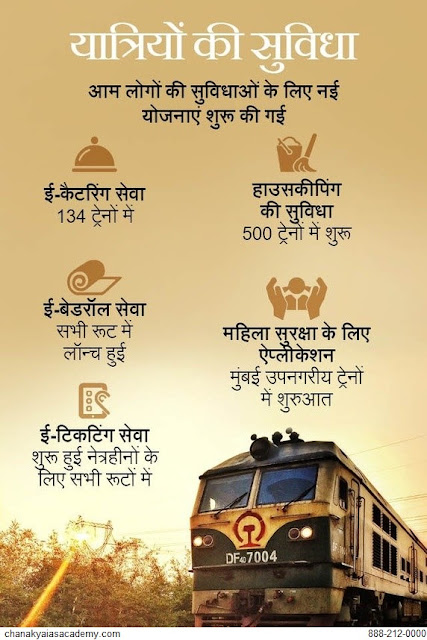The 10 mistakes made by every UPSC CSE aspirant and the redressal mechanism to avoid them are as enlisted below by AK Mishra, Managing Director, Chanakya IAS Academy
1. NOT STICKING TO THE SYLLABUS: One of the biggest myths every CSE aspirant carries with him at some point of time is that the syllabus of CSE is unlimited and anything can be asked under the sky. To some extent this is true but taking your eyes completely off the syllabus can prove to be fatal in long run and can cost you your resources, time, money and energy. Most of the aspirants start off without going through the syllabus prescribed by the UPSC and within no time finds themselves in no man's land.
The Syllabus is the roadmap of preparation. It should be the Bible of any aspirant’s course of preparation for this highly coveted exam. Therefore, it needs to be followed and referred at every step of preparation.
2. NOT REFERRING PREVIOUS YEARS QUESTION PAPERS: If syllabus is the roadmap, referring previous years question papers are like indicators for the right turn at the right time during the journey of the CSE preparation which most of the students realize at a very later phase of the time.
Every step of preparation (unit/section/chapter) should be followed by instant reference of the questions asked in the recent years (both prelims and mains) pertaining to the respective article. This helps the aspirant to mould his/her preparation in accordance to the latest trends of the questions put up by the board.
3. COLLECTING BOOKS: Mukherjee Nagar & Old Rajinder Nagar are often termed as the 'Mecca and Medina' of UPSC preparation in India and the local markets of these UPSC hubs are flooded with various books of numerous authors and publications. However only handpicked books are genuinely relevant for effective preparation of the examination but due to incomplete knowledge of the UPSC CSE preparations most of the students end up pilling books after books in their room turning it into a junkyard instead of an ideal place of learning.
An aspirant should consult seniors who have cleared the examination (preferable), experienced mentors and genuine/reliable sources and then go for buying of resources and study material so that instead of becoming a 'waste' it turns into a proper 'invest'ment.
4. UNDER-ESTIMATING NCERT's: This is the most microscopic and grave mistake which is committed by almost huge majority of the competing crowd. Ignoring NCERT and directly jumping on a heavy weight book can be the 'beginning of the end' of your UPSC CSE preparation.
For example, if an aspirant directly starts up with D.D. Basu for Indian Polity and Constitution of India, he is bound to end up in a soup. Instead, it has to be steadily initiated with basic reference from 8-12 standard NCERT social science textbooks, a subject which is popularly termed as 'Civics'.
5. LACK OF WRITING PRACTICE: The preliminary stage of the examination is not considered as selection criteria for enlisting the final merit list for service selection and cadre allocation. The Mains stage is the 'main' part of the whole selection process which does not only requires mere writing answers but the aspirant has to equip himself with a fluent flow of knowledge, facts, and wisdom in a very precise and skillful manner. Lack of writing skill, which aspirants find it to be the most difficult part to overcome, if not rectified within correct time, is a sure guarantee of failure.
To avoid this, writing practice on daily basis rigorously and religiously is a must. However, for real-time results, aspirants must stick to exam oriented writing instead of blogging which will definitely increase the typing skills instead of writing skills.
6. ILLICIT MANNER OF CHOOSING OPTIONAL: Availability of the Books and study material in the market, ongoing marking and scoring trends of the subject, length and extend of the syllabus and last but not the least, overlapping with the general studies paper. These are the views and opinions which generally run around an aspirant’s mind while choosing an optional which at the end may cause utterly disastrous results.
'Interest' and 'inclination' towards the subject should be the core entities of thought process while choosing the optional. Have a look at the syllabus, go through the previous year’s question papers and most importantly if you can invest hours after hours with the subject without looking at the ticking clock, your inner conscious itself will give you the answer of UPSC CSE preparation's most important answer of 'choosing an optional'.
7. NOT UNDERSTANDING THE CRUX OF NEWSPAPER: Trying to go through multiple newspapers with an overview instead of creatively surfing anyone (Preferable: The Hindu/Indian Express). Collecting and relying on magazines for current affairs (Except The Yojana) as magazines can be a supplement to the newspaper but not a substitute for it. And not understanding 'how to read' and 'what to read' in a newspaper reap low yields in the long run.
Every newspaper has three components if viewed from examination point of view.
Events: This gives you facts. For example, Booker Prize of the year
Issues: This provides you with views and reviews and helps to develop your individual understanding and opinion over various subjects conventional & contemporary. For example, Syrian War Crisis & Refugee Rehabilitation (IR), Naxalism and Insurgency in the North-East (Internal Security).
Gossips: Page 3.
In addition to this, the newspaper article can be categorized under various segments of news viz. International, India & the world, National, States, Business, Science & Technology, Defense, Space, Sports, persons in the news, prizes and awards and much more which will also enable an aspirant to frame well structured Essays (Paper I). Therefore, effective utilization of newspaper can provide soul to the whole body of an aspirant's UPSC CSE preparation subject to careful and persistent efforts.
8. NOT ANALYZING S.W.A.T.: In long run, students not only fail to maintain the tempo and enthusiasm but also often find themselves in the middle of unbalanced wrong directional preparation because they don't undergo the analysis of their strength and weakness as the nature and the requirement of the examinations demands high dynamism and adaptability from the candidates as every subject has to be approached in their own unique ways (For example, History & Geography).
Therefore, it becomes indispensable for an aspirant to consistently keep cross checking the progress and depressions, the grip over strong areas and loose fist over the weaker sections of the syllabus via. Regular mock tests and classroom test series from time to time.
9. TIME MISMANAGEMENT: Any ambition without a time frame is nothing more than a fantasy. Since aspirants invest years end to end for this prestigious examination time management and completing the targets within the stipulated time frame is one of the most essential necessities for clearing this examination which most of the students fail to cope up with due course of time. Time Management can act as a horse or a hurdle; it all depends on the rider (The Aspirant).
To cleverly clear up with this parameter, every aspirant should have a very sound difference between a task or a target which is 'URGENT' and 'IMPORTANT'. The day an aspirant realized the crystal clear difference between the two, it will eventually result in comfortable prioritizing of short-term tasks and targets to gain long term fruits and benefits.
10: AVOIDING CONSISTENT REVISION: The Secret of getting ahead is getting started. But the essence of relieving information on the examination day is to make a habit of retaining the information first. In simple words, students read, read and read but very often don't revise what they read which may result in poor information retention and to the point delivery of the facts and figures on the day of examination.
Revision is the key. There has to be a very well maintained cohesion between what you read and 'revise' what have you read till date. Video Lectures, Subject Audios and Group Discussions (Group Study) can prove to be a boon for an aspirant of UPSC CSE.
Therefore, by carefully following the above-discussed guidelines any aspirant irrespective of their academic background can realize their dream of making it the most Elite Services of the Country.


 Chanakya IAS Academy
Chanakya IAS Academy




